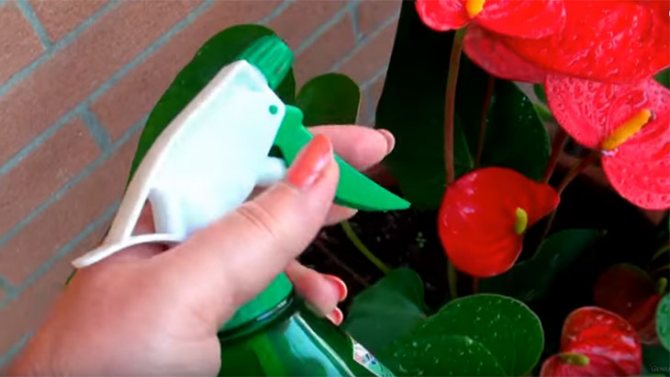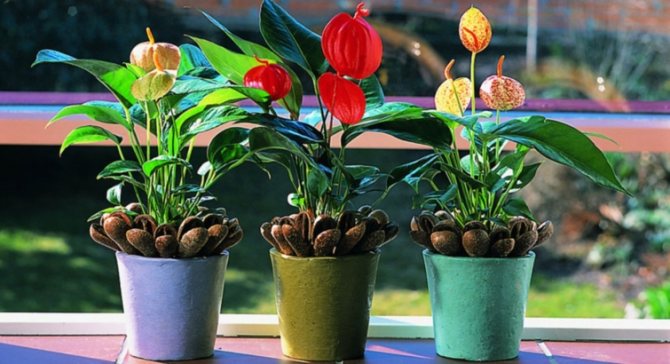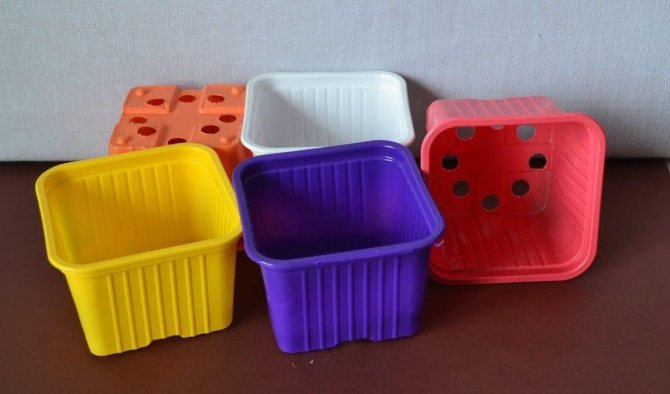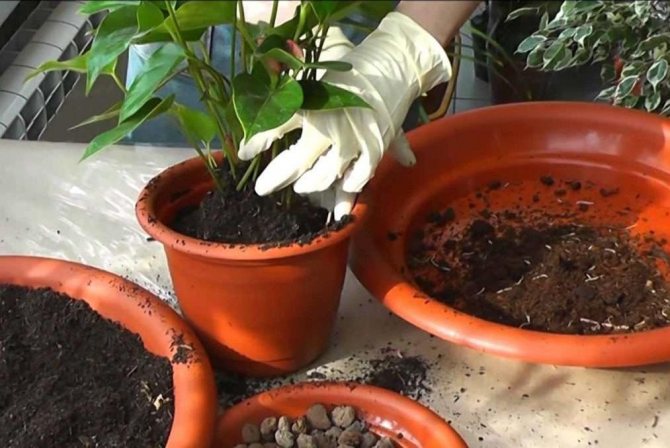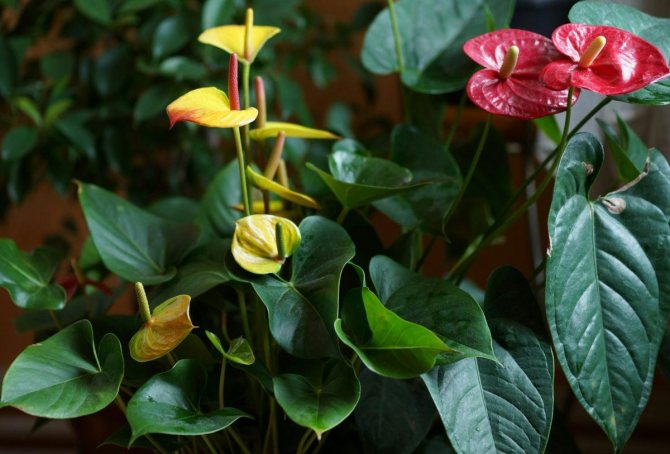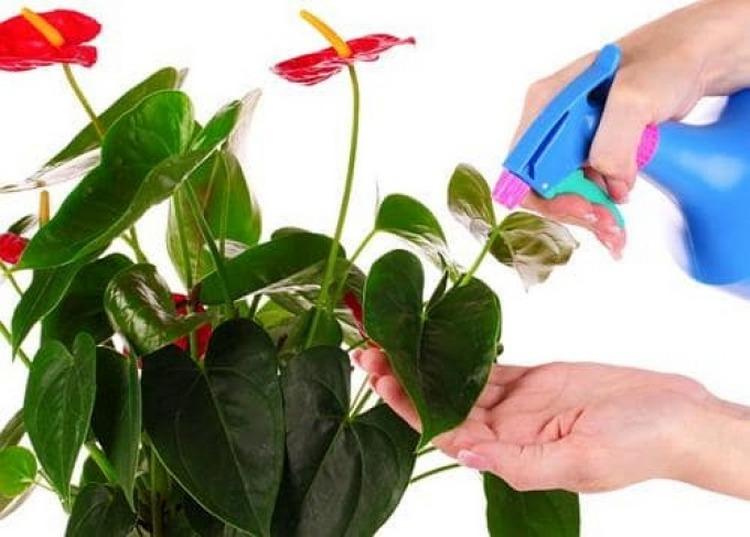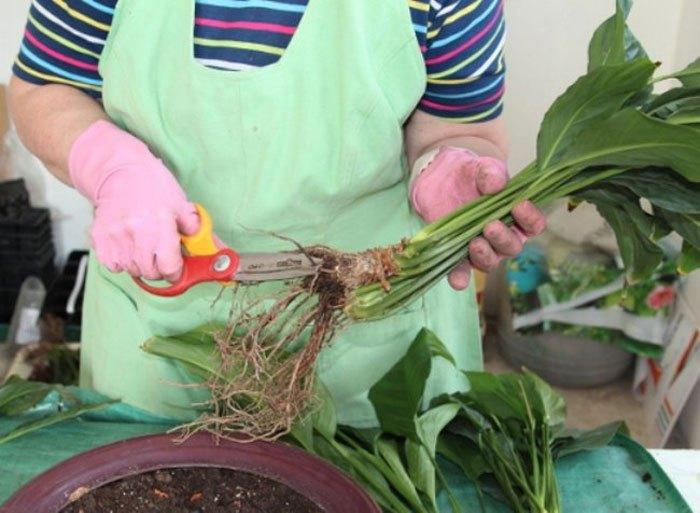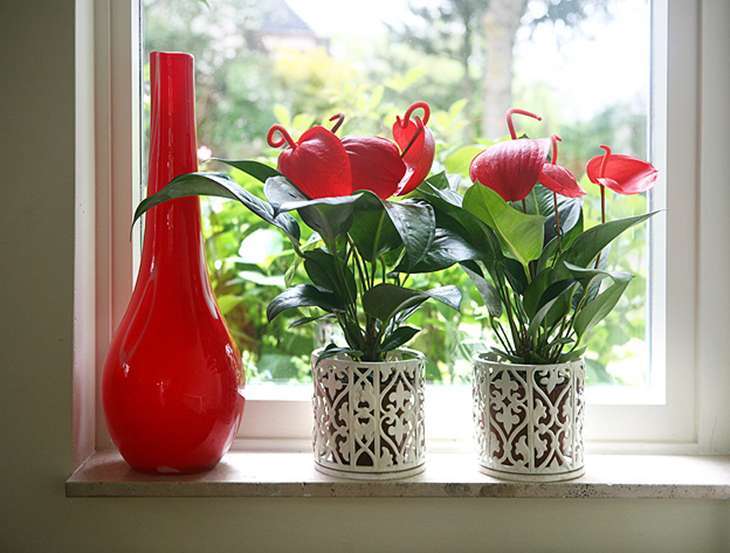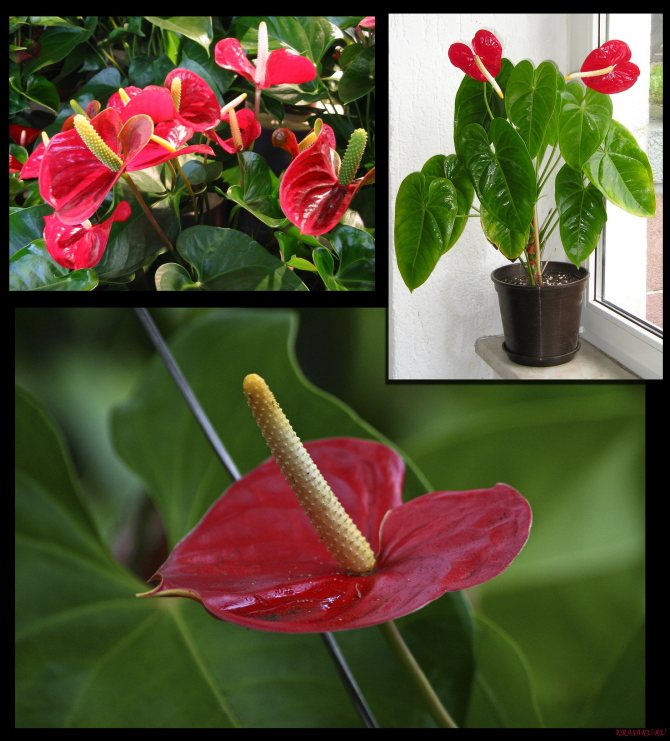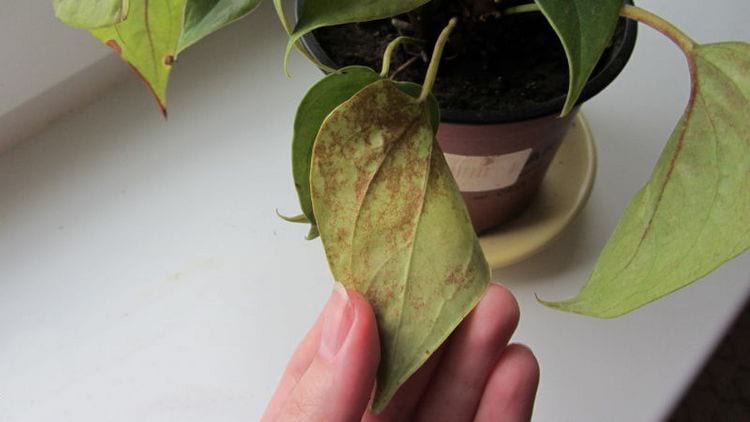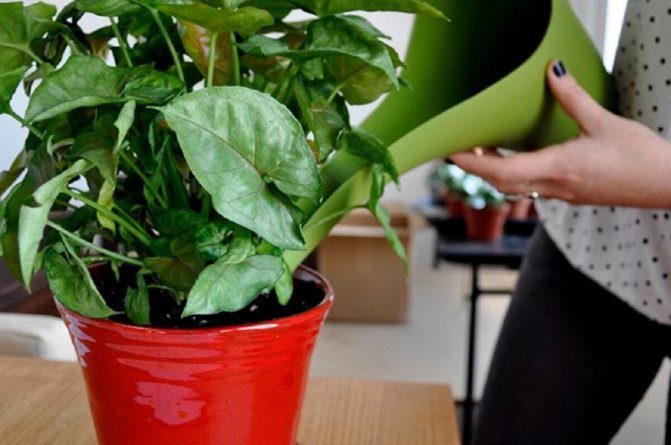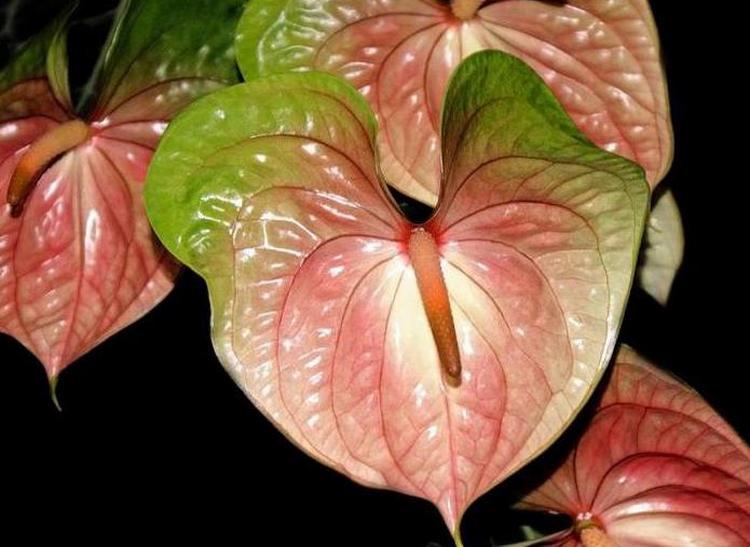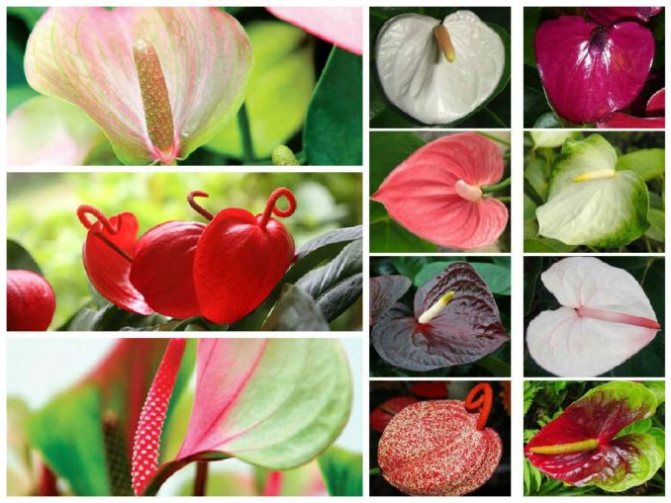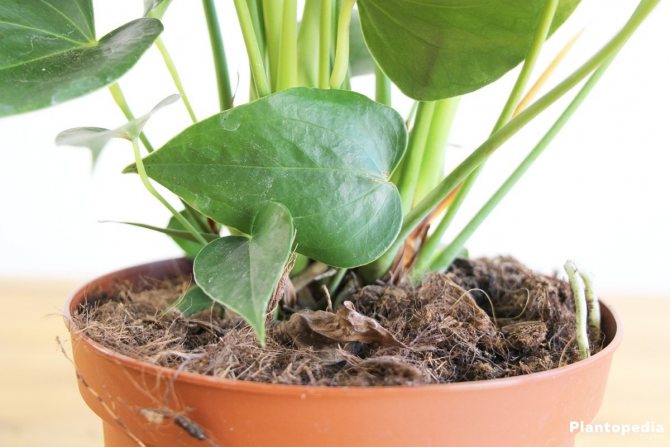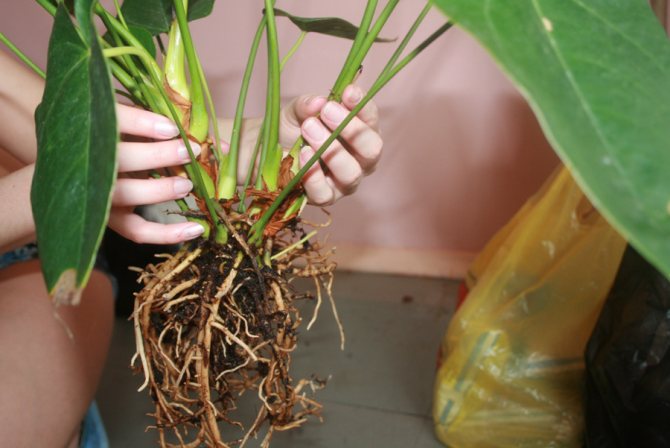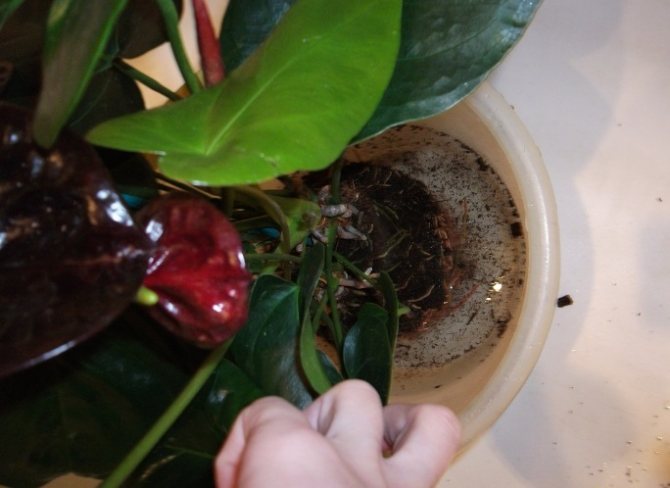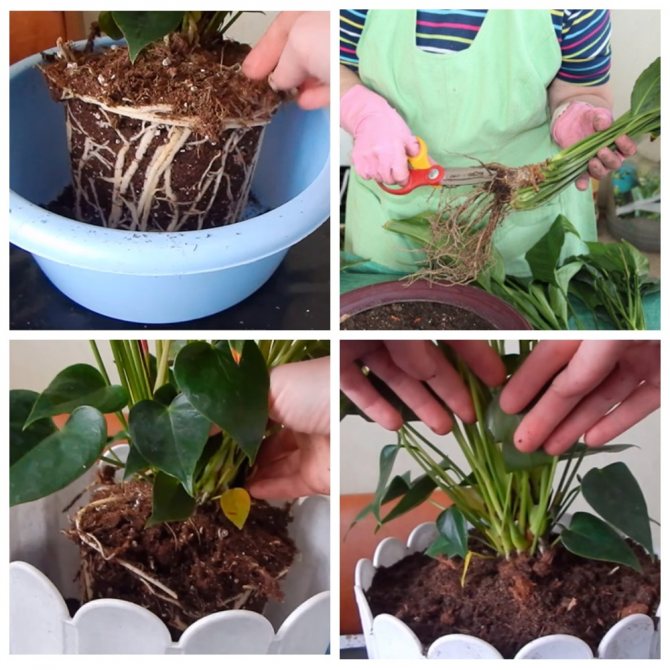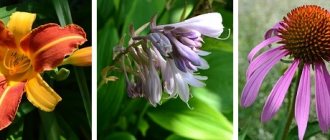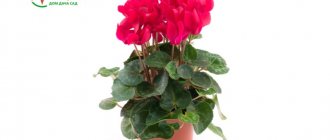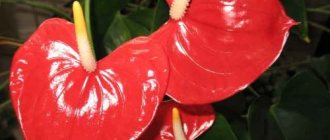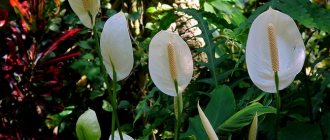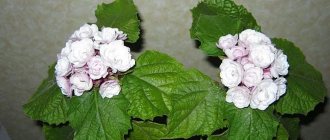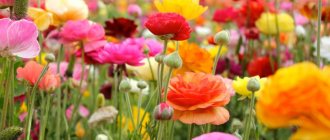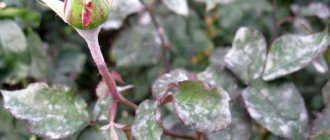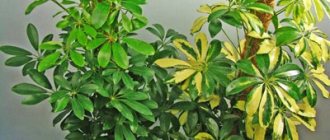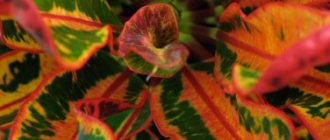It is difficult to find a houseplant that can be in bloom most of the year. If you want to buy just this, pay attention to anthurium. This is the most beautiful representative of the aroid family, for which the people have a sonorous name - male happiness. Its waxy, colorful bracts, towering over dark green leaves, are very durable. Sometimes flowering is delayed for 4-5 months, and then ... starts anew. Moreover, caring for anthurium at home, despite its tropical origin and exotic look, is not too difficult. Of course, problems with him are possible. But they can be easily avoided if the "native" growing conditions of this tropical flower are reproduced as accurately as possible.
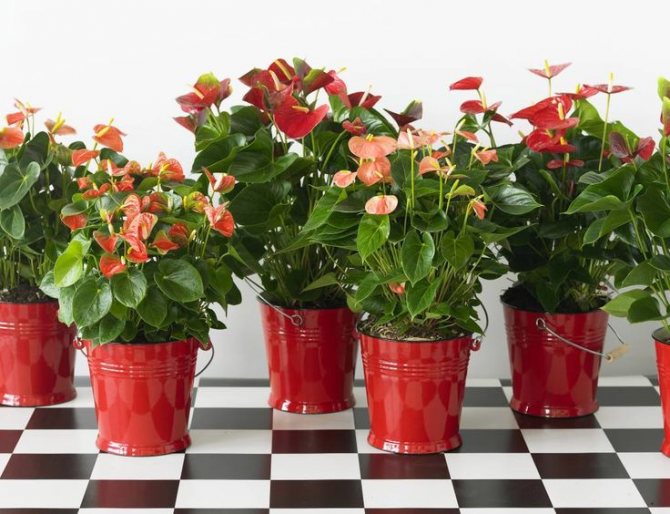
Anthuriums come in a variety of colors, including red, pink, salmon, pale yellow, green, and orange.
Condition No. 1. Lighting
In nature, anthurium grows in the tropical jungle, under the canopy of trees that protect it from the scorching sun. Accordingly, it should receive a lot of bright reflected light, but not direct sunlight.
Excessive sun exposure leads to burns of leaves and bracts of anthurium. At first they turn yellow, then dry up and die off.
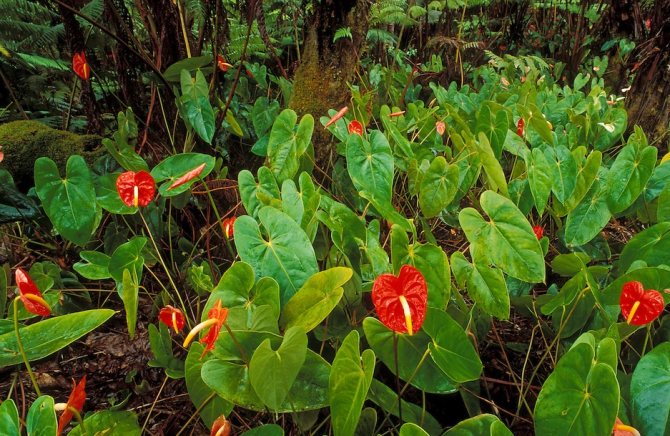

In the jungle, anthuriums are protected from direct sunlight, but they get a lot of diffused light
But a full shadow is also bad. Low light conditions cause stunted growth and fewer flowers (or cancellation of flowering).
Best of all, male happiness grows in diffused, but the brightest light. The ideal windows for him are oriental. In summer, aggressive sunlight is possible on the western windows, from which protection is necessary - curtains or blinds. The same, but even more so, applies to the southern windowsills. If you don't want to mess with the blinds, there is an alternative: placing the anthurium at a short distance from an overly lit and hot window. So the direct rays will be scattered and the plant will not get burned.
North windows are also an option, but only if they are not obscured by trees. There is a lot of diffused bright light on the northern windows, this is an excellent medium for growing anthurium.
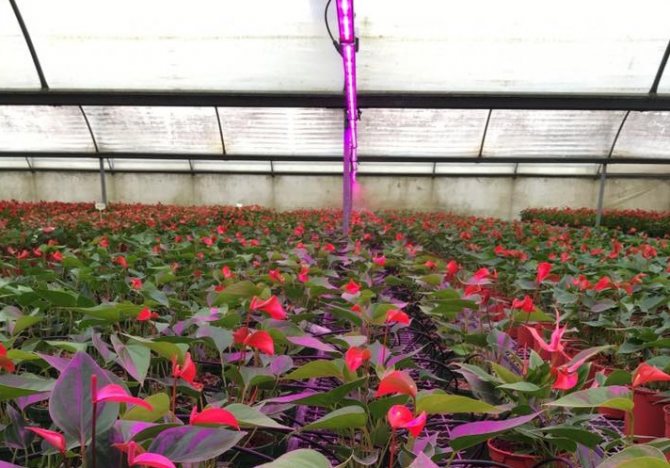

In greenhouses, anthuriums are grown under phytolamps. Additional lighting at home will allow these plants to bloom profusely even in winter.
How to care for a flower male happiness to bloom at home
Comfort is very important for a plant from the tropics. And therefore, it will be necessary to maintain suitable modes of light and heat, monitor the moisture content of the soil and surrounding air.
In conditions close to tropical, anthurium will bloom from early March to late autumn, and its foliage remains deep green all this time.
Optimal watering and feeding
The plant is of tropical origin, so watering it requires abundant, but rather rare. On hot days, anthurium is watered only once every 3-4 days, and it is necessary to avoid stagnant water, as this will adversely affect the root system. Excessive fluid can cause the plant to develop mold or mildew.
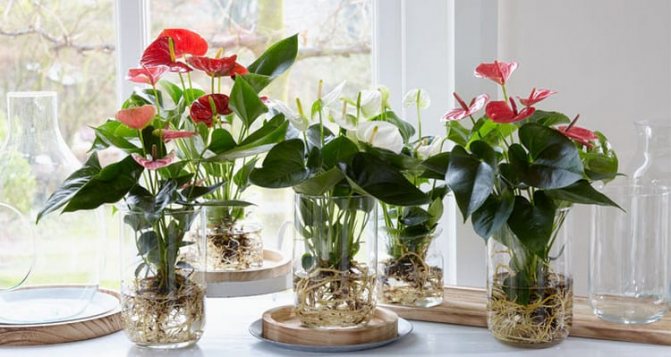

Alternative to a flower pot
Advice. In the dry season, the flower requires systematic feeding.It must be produced once every 15 days with compositions of minerals and organics, and the water should not be hard.
In winter, the plant comes to rest, so watering must be reduced to 1 time in 7 days. However, now it will need to be sprayed often, do a warm shower, and also use air humidifiers.
It is recommended to regularly wipe the Leaves of Man's Happiness with a damp sponge to remove dirt and to provide additional moisture. You should also monitor the moisture content of the soil - exotic flowers do not like dry soil.
Ambient temperature
Plants of tropical origin prefer warm climates. Therefore, it is necessary to maintain the temperature regime, which in summer should vary in the range of 20-25 degrees, and in winter - at least 18.
Advice. The plant is afraid of drafts, so a secluded space with a sufficient supply of fresh air would be the best place for it.
One of the main indicators of proper care is the creation of optimal lighting. Dispersed light is considered ideal for it. Scattered bright rays can damage the leaves of the plant, thereby ruining all its external beauty.
Condition No. 3. Air humidity
Thinking about how to care for anthurium, remember that in nature it grows in a tropical climate, which means that at home it needs high humidity. Ideally, it should be 80% or higher. If this figure is lower, prepare for problems. First of all, the decorativeness of anthurium will decrease: the leaves will lose their glossy shine. And the risk of catching some kind of infection, for example, a spider mite, which loves to attack weakened plants, will increase.
The moisture can be increased by placing the pot on a tray filled with moistened claydite. Or - with the help of moistened sphagnum moss, which is laid out on top of the substrate (see photo below).
You should also introduce daily spraying into the anthurium care measures at home, while trying not to get on the flowers (stains may remain on them).
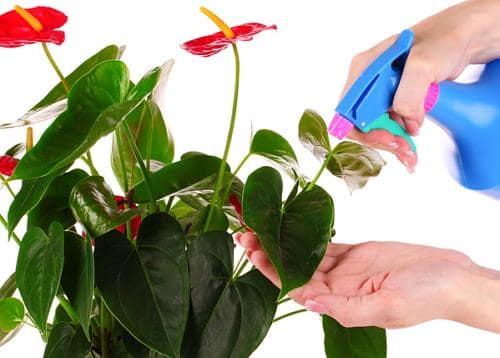

Spraying will increase moisture around the plant and give the leaves extra moisture.
Anthurium (flower): description
Now there are about 28 species of this beautiful plant. In addition, more than 75 hybrids have been bred by breeders. Anthurium (flower) is very beautiful, both its flowering and leaves are pleasing to the eyes. They are painted dark green, heart-shaped or arrow-shaped, up to 40 cm long.
Flowers amaze with their exotic beauty and variety of colors. The flower looks like an ear of yellow, pink or white color, surrounded by a beautiful shiny veil, which can have a color from dark red to white, sometimes elegant spots are noticeable on it. The veil is shaped like a human heart.
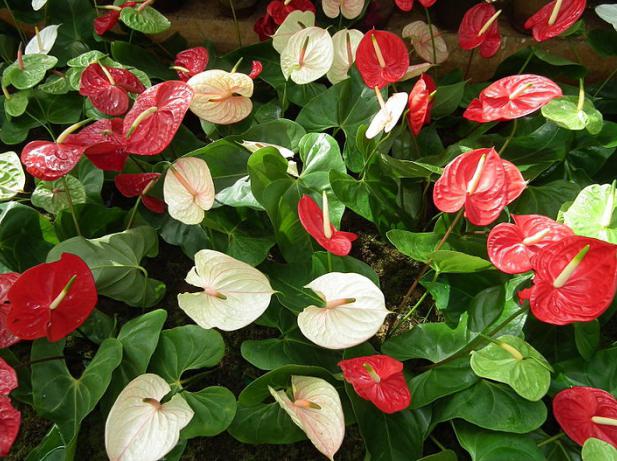

For eight whole months, blooming anthurium continuously pleases its owner with the beauty of the buds, although some of them bloom for only about 40 days. If you follow all the rules for caring for an exotic handsome man, the plant can grow up to 0.8 m in height and up to 0.5 m in diameter.
Condition No. 4. Watering
The potted soil should dry out between waterings. Constant humidity is not acceptable. Moreover, even the water that seeps into the sump must be drained immediately.
This mode is due to the fact that anthurium is susceptible to root rot, which often ends in the death of the plant. The first signs of the bay: yellowing of the leaves, the formation of brown spots on them.
But you cannot go to the other extreme, unnecessarily overdrying the soil. Such a strategy leads to a slowdown in the growth of anthurium, in addition, when watering, the "petrified" lump of soil will be difficult to wet. If the lump has become too dry, you should immerse the pot of anthurium in a bowl of water for 30-40 minutes.Then the soil will be moistened and the roots will be able to receive normal nutrition.
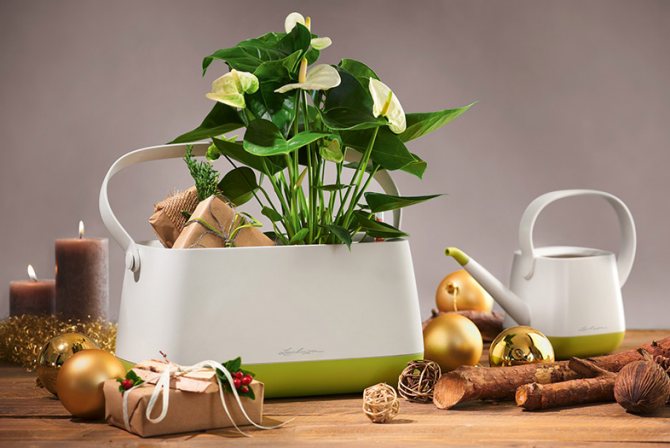

Watering anthurium must be very careful, avoiding stagnation of water in the pan
Landing rules
Before transplanting, you need to prepare a suitable pot and buy soil for growing orchids. Garden steamed earth can be added to the purchased mixture.
Ideally, a light, moisture and breathable soil should be obtained. To eliminate stagnant water, you need to lay a drainage layer on the bottom of the pot.
Roots need air, so heavy soil is not suitable for planting a plant.
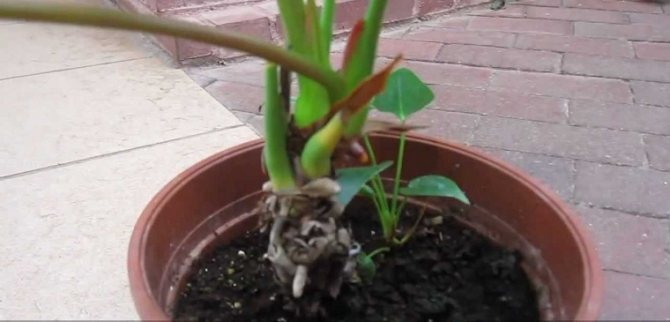

To make the anthurium bloom, you need to plant it in a small pot. If you want to grow a luxurious flower with gorgeous foliage, you will need to pick up a wide pot to plant it.
Condition No. 6. Priming
In their homeland, in the tropical jungles of South America, anthuriums grow on the trunks and branches of trees. This growth method allows them to receive a large amount of moisture in the form of rain and fog. But this water does not linger and drains quickly or dries up in warm climates. And open roots growing without a substrate receive a lot of oxygen.
In our climate, at home, anthuriums are grown in pots. But with the help of a properly selected soil - loose, breathable - it is possible to recreate almost "natural" conditions for the roots.
Unfortunately, most of the primers sold in the store are too water-absorbing. In such an environment, anthurium can die, since excess water blocks the supply of oxygen to its roots and promotes the growth of anaerobic bacteria and fungi. Therefore, it is necessary either to buy soil specifically for anthuriums (there are such ones!), Or to make up the mixture yourself.
The composition of the substrate for anthurium No. 1:
- universal soil - 1 part;
- crushed pine bark - 1 part.
Other useful loosening components can be added to such a simple diet: perlite, broken brick, coarse sand, pieces of charcoal.
The composition of the substrate No. 2:
- 2 parts orchid soil;
- 1 part peat;
- 1 part perlite.
Composition of substrate No. 3:
- 1 part peat;
- 1 part pine bark;
- 1 part perlite.
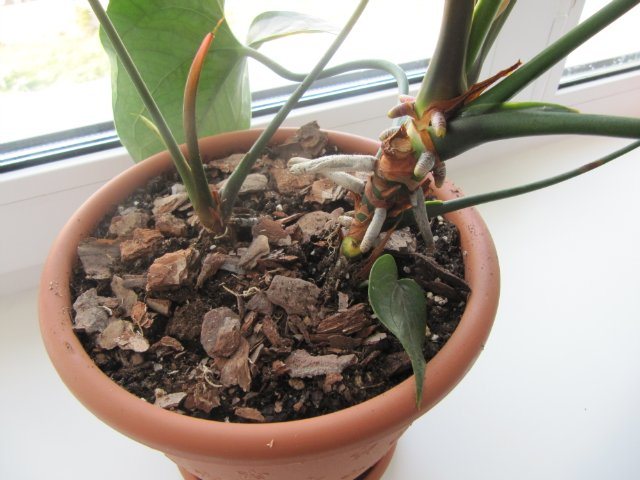

Soil for anthurium, in its composition, is similar to the substrate for orchids
Condition No. 7. Correct transplant
The first transplant should be done after purchase. Purpose: to change the transport soil, which is usually not very suitable for long-term planting. Manipulations with roots are easily tolerated by anthuriums, therefore, after a short adaptation period (1-2 weeks after purchase), transplant calmly. If the plant has signs of a bay (yellowing or drying leaves), then the soil should be changed immediately.
The pot is selected by the size of the root or slightly larger (1-2 cm in diameter). A larger increase in size will increase the risk of root rot and, as a result, can lead to the death of the plant. Large drainage holes are required at the bottom of the pot.
It is best to choose a plastic pot for the anthurium. Ceramics, despite its beauty, has significant disadvantages: it cools down strongly when the temperature drops (at night, in cool weather) and heats up the same way (in the sun). Such temperature jumps for the roots of anthurium can be disastrous.
Step-by-step transplant scheme:
- Carefully remove the root ball from the old pot.
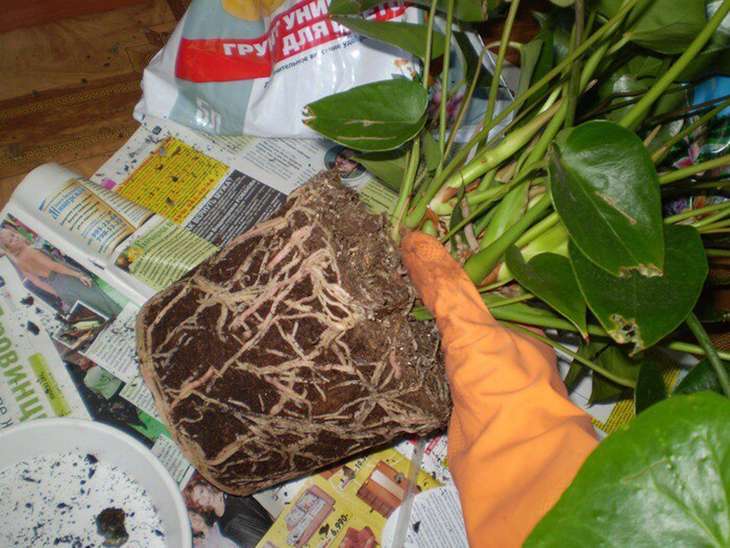

You need to carefully remove the roots from the old pot, they are brittle and can easily be damaged
- At the bottom of the new container (pot), a layer of expanded clay (broken brick, pieces of foam) is poured, 2-3 cm thick. This layer is called drainage, it accelerates the outflow of water and does not allow it to stagnate at the roots of the plant.
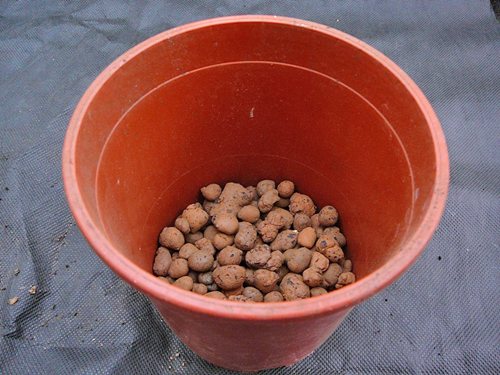

The expanded clay layer should be at least 2-3 cm
- On top of the drainage, a layer of soil is poured onto 1/3 of the pot.
- Install the root ball on top.
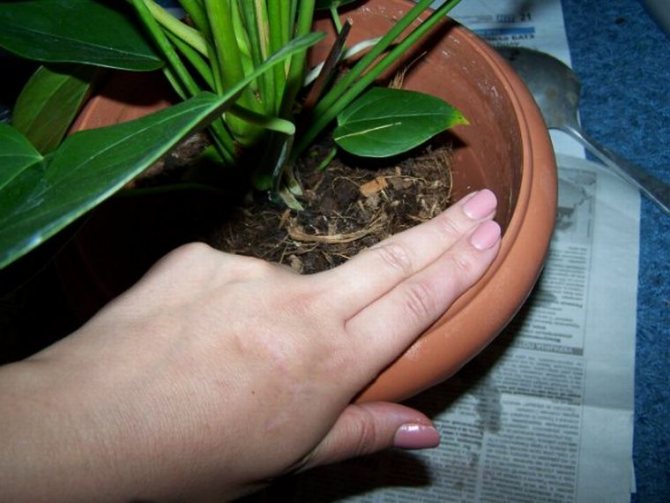

The new pot should be slightly larger in diameter than the old one.
- Fill in the soil between the walls of the pot and the roots.
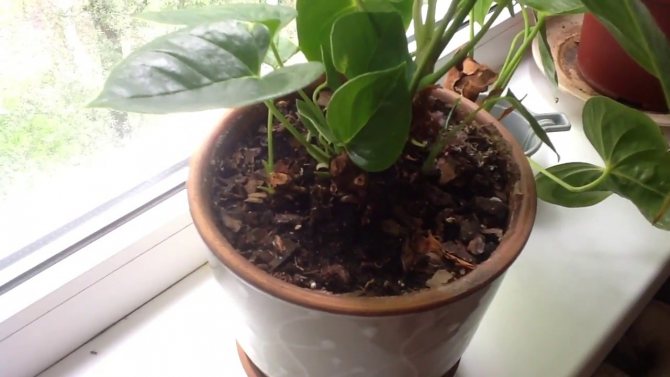

After transplantation, anthurium does not require feeding for a month
In the future, young anthuriums are transplanted every year in the spring, adults - every 2-3 years. After transplanting, man's happiness must be taken care of the flower more carefully, since the roots may be damaged.
How to replant after purchase
After you bought the plant. You should examine the root system and the appearance of the plant. Of course, this should be done immediately in the store, but you can not overlook it. At home we inspect the plant for diseases of roots and leaves. To do this, carefully remove the plant from the planting pot. We examine the roots of the plant. If they are good and there is no rot or damage. Gently insert it back and take care of it for a couple of days. If there is damage to the roots, leaves. Then we transplant the plant immediately. All rotten roots must be removed with a knife or scissors, as well as damaged leaves. Treat with appropriate preparations. It can be phytosporin, zircon, epin. Then we take the plant and carefully free it from the planting soil. In which it was sold. We straighten the roots and carefully plant them in a prepared pot. We put it in a permanent place and take care of it.
Condition No. 8. Timely control of diseases and pests
The main scourge of anthurium is root rot, which appears, as it sometimes seems, out of nowhere. But there is still a reason. This is waterlogging of the roots. Usually it is the result of frequent, completely unnecessary for this plant, watering. The epiphytic roots of anthurium do not need frequent moisture at all, they are able to independently accumulate moisture and be content with occasional watering. A similar character at the roots of orchids. Excessive watering in combination with cold is especially destructive. Therefore, in winter, anthuriums rot more often.
Waterlogging can also be caused by an unsuitable, dense soil that retains moisture for a long time or poorly permeates it. The substrate should be loose, allowing water to quickly drain into the pan and not stay long at the roots. A high drainage layer and holes in the bottom of the pot are required.
Anthuriums are quite resistant to other diseases. Sometimes they are attacked by a spider mite, the invasion of which can be prevented by regular spraying.
How to care for anthurium correctly and forget about possible problems will be discussed in the video plot:

